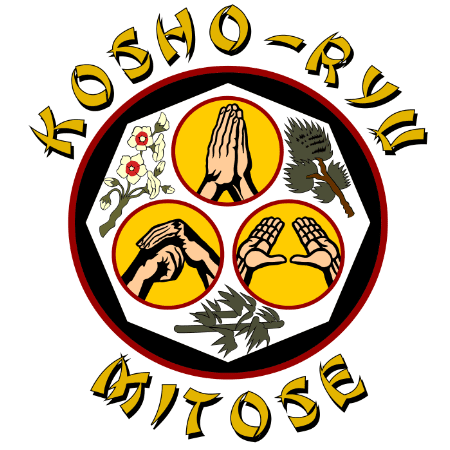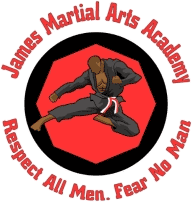
The Life of James Mitose, Kosho-Ryu Kenpo’s Founder
On December 30, 1916, a Japanese couple gave birth to a child they called Masayoshi Mitose in rural North Kona, Hawaii. He adopted the name James and became known as the man who brought Kenpo to the West in the following years. We can follow in the footsteps of this extraordinary martial artist by following his words (in italics) and his actions.
James Mitose was born on a coffee plantation. He remained there until October 22, 2022, when he traveled to Japan with his sister and lived under the supervision of their grandfather. I was to assume the family business, including religious activities.
Their destination was a village named Kumamoto-Higashi-Tomochi. “I learned Kenpo in a large temple built on top of a mountain called Akenkai.” He cleaned the temple, swept floors, and served monks and their families for two years. Only then was he permitted to receive an education. “The temple was a school in which we practiced some Indian rituals.”
Half of each day was dedicated to religious activities, including the study and practice of Sanskrit. The other half was devoted to Kenpo. “There are many grades and classes within the organization, starting with the Archbishop or Bishop [and] going down to a monk. It is not like karate, and it is different from black belts [and] brown belts. “
James Mitose had the tradition of Buddhist monks shaving his head. He also learned Buddhism in Japan, Christianity, and other religions from India or Tibet. He prayed to his ancestors and to the Buddha, so that all things would be successful. He read the Bible and learned Greek philosophy.
His studies heavily influenced the philosophical aspect of Kosho-Ryu Kenpo. I once planted a vegetable in the temple and accidentally killed earthworms. I was forbidden from eating for three days. It is a Japanese custom to kill anyone and have seven generations of suffering. You cannot do such things because everyone suffers. “
James Mitose received training at the temple in human anatomy, escape patterns and energy collection. He also learned about nutrition and body-contact art, which revolved around pushing or pulling. He also learned timing, balance, coordination, and timing, as well as concepts of motion and movement. “When there was an outdoor funeral in the village, I was a pallbearer.”
The temple monks were always eager to give back to their community. The nearest hospital was too far away for villagers to walk to, so the monks often acted as doctors when there were illnesses.
James Mitose was a natural-food specialist. He was a keen learner of herbs and used his knowledge to help the villagers. He and his friends traded manual labor for food in the nearby areas. “I was taught to take care of my health. I shouldn’t eat it unless I work. Instead of going out and begging for food, I tried to raise food by myself in group activities with other organization members. Except for the archbishop, all other members were involved in such physical labor, including planting rice, cooking rice, and cutting firewood.
Building up confidence can stop bullying.
James Mitose’s journey from monk to minister was a turning point in his life. His dedication and training helped him achieve this transition. However, his mind started to wander away from the temple and his body soon followed. “I was released from the group life and became completely free.”
He traveled the countryside for the next two decades with others from the temple. He worked with local police and eventually found a military exercise on the mountainside that was being prepared citizens for battle. “At that time, elementary schools were taught military training to prepare for war with America.”
Propaganda spread across Japan. Every citizen was instructed to take up arms and defend the country if necessary. Violations were immediately prosecuted and could result in imprisonment. This was in direct opposition to the monastic path of nonviolence. “In our Law of Fists, we are not supposed to obey the orders of the emperors or supreme commanders of the military forces. My brother and I were against these military operations. Some were arrested. People around me suggested that I return to Hawaii as soon as possible. A military jail could be a place where I would end up.
James Mitose, a 1937 sailor, set sail for Hawaii in search of a new life in the country of his birth. Robert Trias became his friend. Their time together led to martial arts talks, but it was cut short by the Japanese surprise attack on Pearl Harbor on December 7, 1941. The Japanese decimated the U.S. fleet. In just two hours, 18 ships were destroyed, 300 aircraft were damaged or destroyed and 2,400 people died.
James Mitose wanted to help and enlisted in the Hawaii National Guard less than 24 hours after the attack. “My situation was different than that of most Americans. I had lived happily as an American citizen. I loved America and its institutions and felt it was my duty and honor to serve this country. It wasn’t as easy as it would have been for most. I had spent my formative years in Japan, and I had relatives still living there. I was bound to them by blood ties and shared experiences.
After three weeks of service, James Mitose received an honorable discharge. He then volunteered to serve in a labor battalion. He felt he had to do more to help the war effort and decided to share his family’s martial arts. “The purpose of the project was to spread peace and happiness to all peoples and to help in the fight against crime.”
James Mitose visited many martial arts clubs in Hawaii. He began to teach Kosho-Ryu Kenpo. He taught in his backyard where a few students assembled, one of which was Thomas Young. He was then introduced to William K. S. Chow.
James Mitose needed larger accommodations as his student body grew. He opened the Official Self-Defense Club in 1944, first at the Beretania Mission of Honolulu, then at the YMCA. Its purpose was to teach self-defense to all students, regardless of rank, religion, or nationality. The majority of those who signed up for it were not Japanese.
James Mitose taught them how to use it for military service, law enforcement, and other personal purposes. He taught them how to use tools like the makiwara board and “Kenposticks” to focus energy and eliminate evil from within. He would give them an attack and then allow them to think about how to respond. He stressed the importance of perfect balance and technique and added lectures on philosophy, humility, respect, and situational awareness to his physical training. “My religion is not to fight.” Never fight and do nothing–that is Kenpo karate’s true religion. “
Mitose saw a way to help others as the Official Self-Defense Club grew. They organized self-defense demonstrations in Hawaii, donated food to the National Guard, and raised money for the March of Dimes. The more students he had, the more good work he did for the community. This in turn brought in more students. He finished his work on the book, which many consider the first English-language Kenpo book, in 1947. “I wrote in Japanese as well as English.”
Titled “What is True Self-Defense? It featured a cover featuring two combatants in a fight. James Mitose released it again in 1953, with a modified version of his family’s crest on the cover. The crest was covered with a fist because the world was at war.
James Mitose wanted his thoughts on self-defense to be shared but felt pressured to include photographs in the book. He was afraid that students looking for quick defensive moves would turn to the technique pages and miss the message he was trying to convey. To the average reader, it would seem to be another fighting book. Many copies were donated to local police stations, public libraries, and clinics. Some were sold together with lessons.
His students expressed interest in learning more about Kosho Ryu Kenpo’s aggressive, fierce side over the years. They seemed to ignore the philosophical aspect of martial arts. “My dojo, they know that I’m not allowed to teach other things as it’s religion.”
After a student attacked and seriously injured another student, James Mitose realized that his students were too familiar with the violent side of martial arts. Instead of understanding the true meaning of self-defense, they focused on kicking and punching.
After much thought, James Mitose decided to quit teaching. “I decided not to teach Kenpo or other Oriental philosophy. They didn’t understand it so I gave up.”
He gave his school to Thomas Young in 1955 and began a new life in Los Angeles. James Mitose was ordained a minister by the Episcopal Church. He also obtained a doctorate in philosophy on the mainland. He maintained his relationships with the people he loved and the friends he had to leave behind in Japan.
He taught Kosho-Ryu Kenpo only to a select few students for the rest of his life, and my teacher, Tony Bowles, was one of them. He was frustrated at times due to the language barrier and differences between Japanese culture and that of mainland America. James Mitose was viewed as a grumpy man by most people who met him in this state. They could not understand his personality because they had never lived it.
James Mitose was killed on March 26, 1981. Folsom State Prison was where he was being held at the time. Although he was found guilty of extortion, murder, details of his involvement in the crimes are not clear due to a mistranslation from Japanese into English. Many believe that James Mitose was the one who committed the murder.
James Mitose’s life was over. His selfless act of kindness set Kenpo in motion and he died. His only requirement to be accepted into his school was the desire to live a more harmonious lifestyle.
